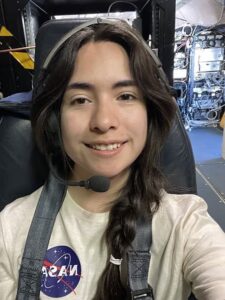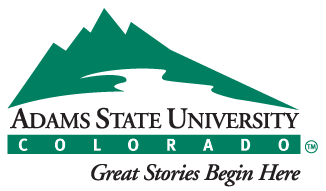Nohemi Rodarte found her professional goal as a member of the first cohort in Adams State University’s Mechanical Engineering Partnership Program with Colorado State University (CSU). Now in her third year, this past summer she spent eight weeks in Virginia interning in NASA’s Student Airborne Research Program (SARP). Her group of only 24 students gained exposure and experience at four NASA facilities: Langley Research Center, NASA Goddard Space Flight Center, Wallops Flight Facility, and Virginia Commonwealth University’s Rice Rivers Center.
“In general, I learned a lot about how to do research, and how NASA works around the world – not just in space. NASA cares a lot about monitoring the earth to gather as much information as possible. They care about environmental justice and climate change,” she said. “This gave me a more solid path to follow with my degree. I want to design and create prototype mechanisms to monitor the environment and preserve it.”
The internship students were divided into four groups, each focusing on a different aspect of the climate: the ocean, atmosphere, hydroecology, and fluxes (gases); Rodarte worked on the flux component, focusing on CO2 and methane. Her group investigated how CO2 concentrations vary with altitude at fine spatial scales. To do so, they worked from airplanes outfitted as flying laboratories.
 She further explained: “Carbon dioxide (CO2) is one of the main greenhouse gases that contribute to global warming. We hypothesized that CO2 levels vary with altitude and increase with elevation, so we used airborne data collected from the B200 aircraft, which flew at different altitudes above the urban area of Hopewell, Virginia.” She said a next step would be to use drones to capture data at different elevations above different types of land cover.
She further explained: “Carbon dioxide (CO2) is one of the main greenhouse gases that contribute to global warming. We hypothesized that CO2 levels vary with altitude and increase with elevation, so we used airborne data collected from the B200 aircraft, which flew at different altitudes above the urban area of Hopewell, Virginia.” She said a next step would be to use drones to capture data at different elevations above different types of land cover.
“One of the things that surprised me most about NASA is that they seek integrity and diversity within their platforms. Even though most of my fellow students were white, I found a role model in Dr. Yaitza Luna-Cruz.” From Puerto Rico, Luna-Cruz is Program Executive at NASA’s Earth Science Division in NASA Headquarters. “She really impressed me. She has the same background that I do, of transitioning to adulthood in the U.S. She is working so hard to include more diversity into NASA.”
The daughter of migrant farmworkers, Rodarte was born in Alamosa but moved to Mexico at age 4, then grew up in El Porvenir de Jerez de Garcia Salinas, Zacatecas, Mexico. Finding that college in Mexico was unaffordable, she returned to the San Luis Valley at age 18, then spent a year taking remote high school courses (during the Covid Pandemic) to relearn English, and to establish Colorado residency.
“It was not that easy; I just had basic English courses in Mexico. I also had no perspective on college life or life in the U.S.” Then she enrolled at Adams State through CAMP (College Assistance Migrant Program). During the summer of 2023, she completed a Research Experience for Undergraduates (REU) in STEM fields at CSU in Ft. Collins.
Students in Adams State’s Mechanical Engineering Partnership Program earn a bachelor’s degree from CSU without leaving the Alamosa campus. Adams State faculty teach the first two years of coursework, and CSU faculty teach the last two years.
Article by Julie Waechter, special to Adams State



